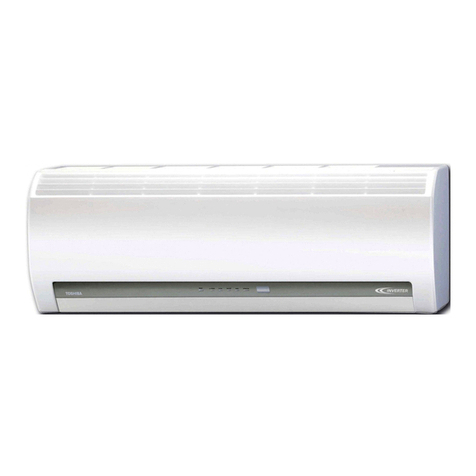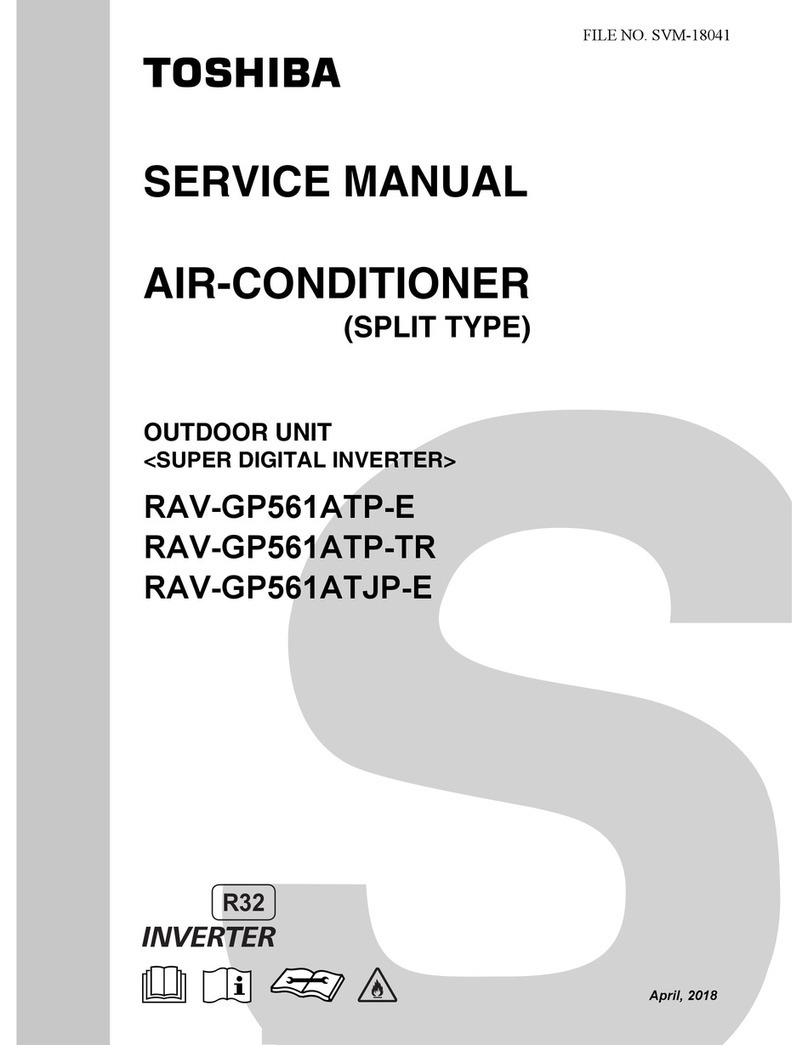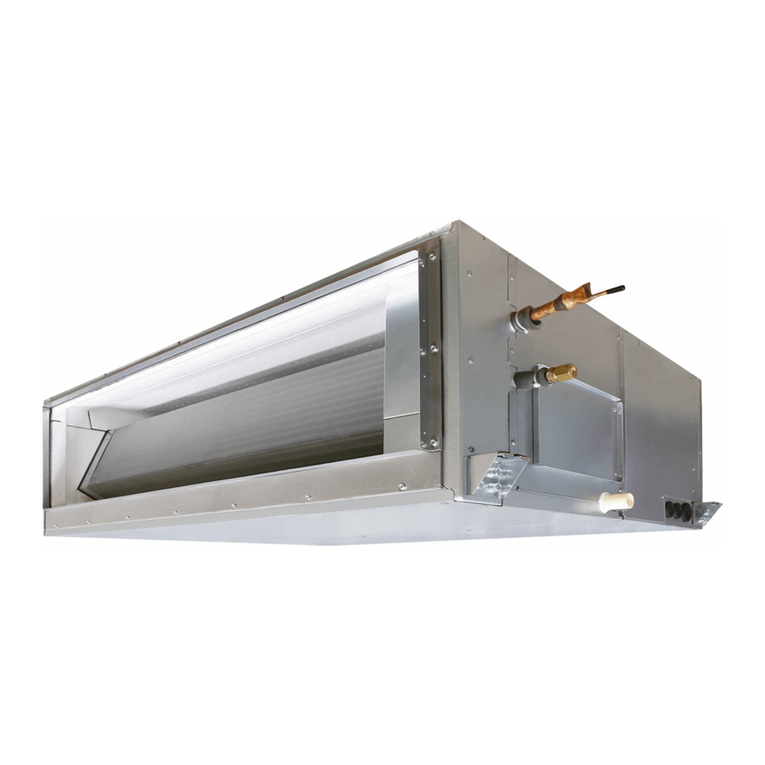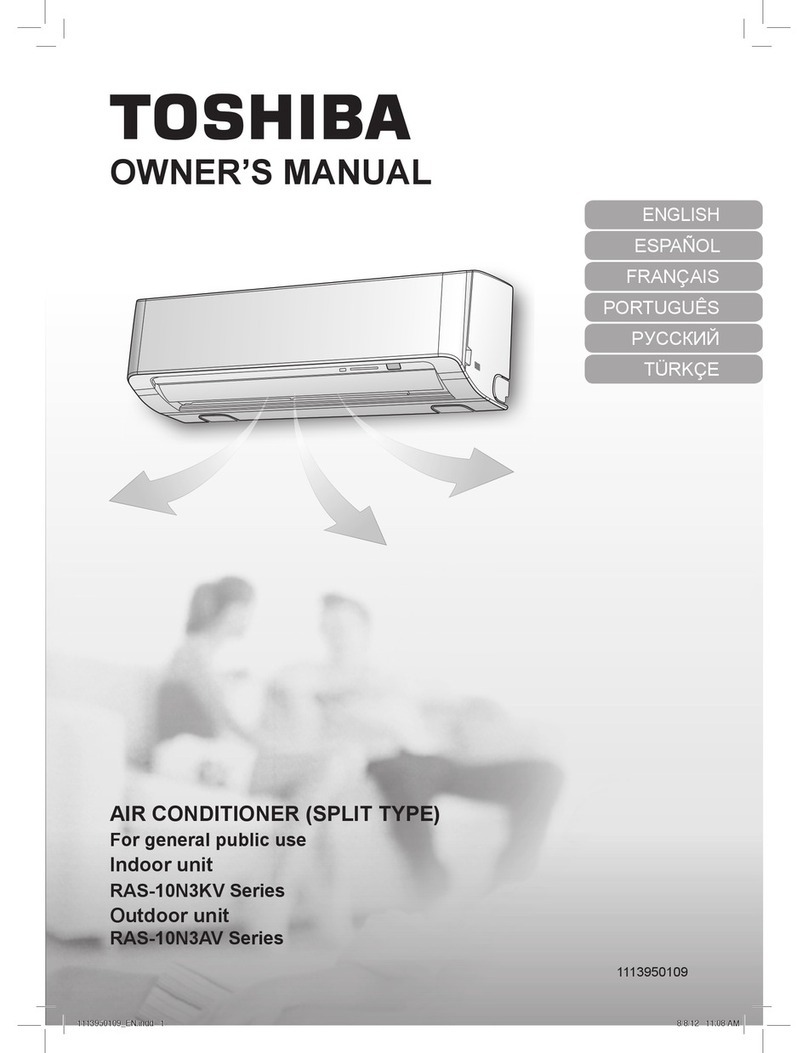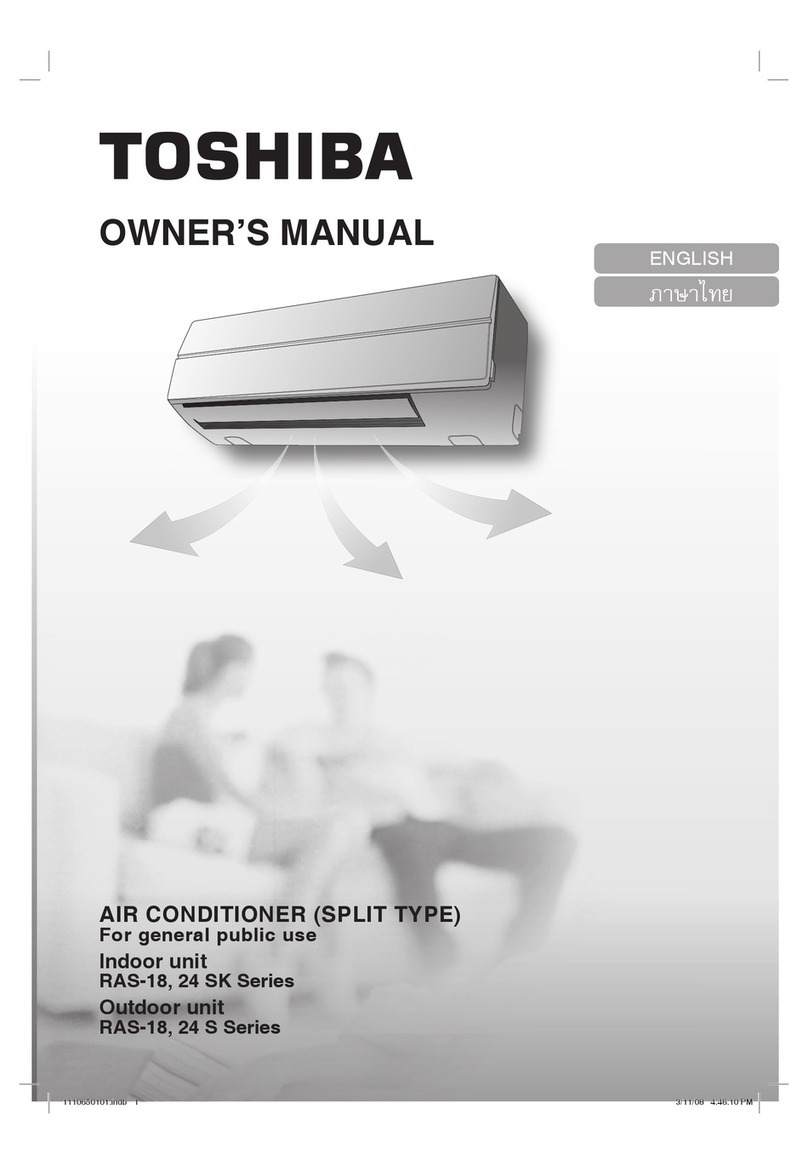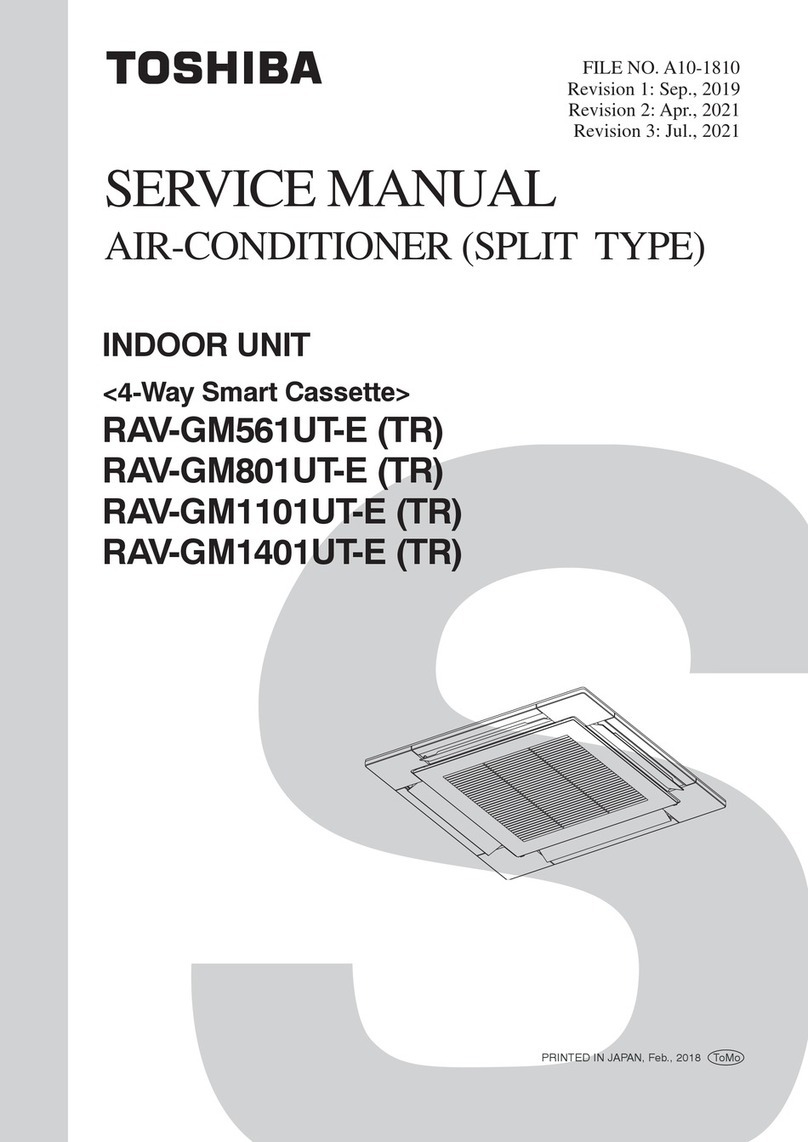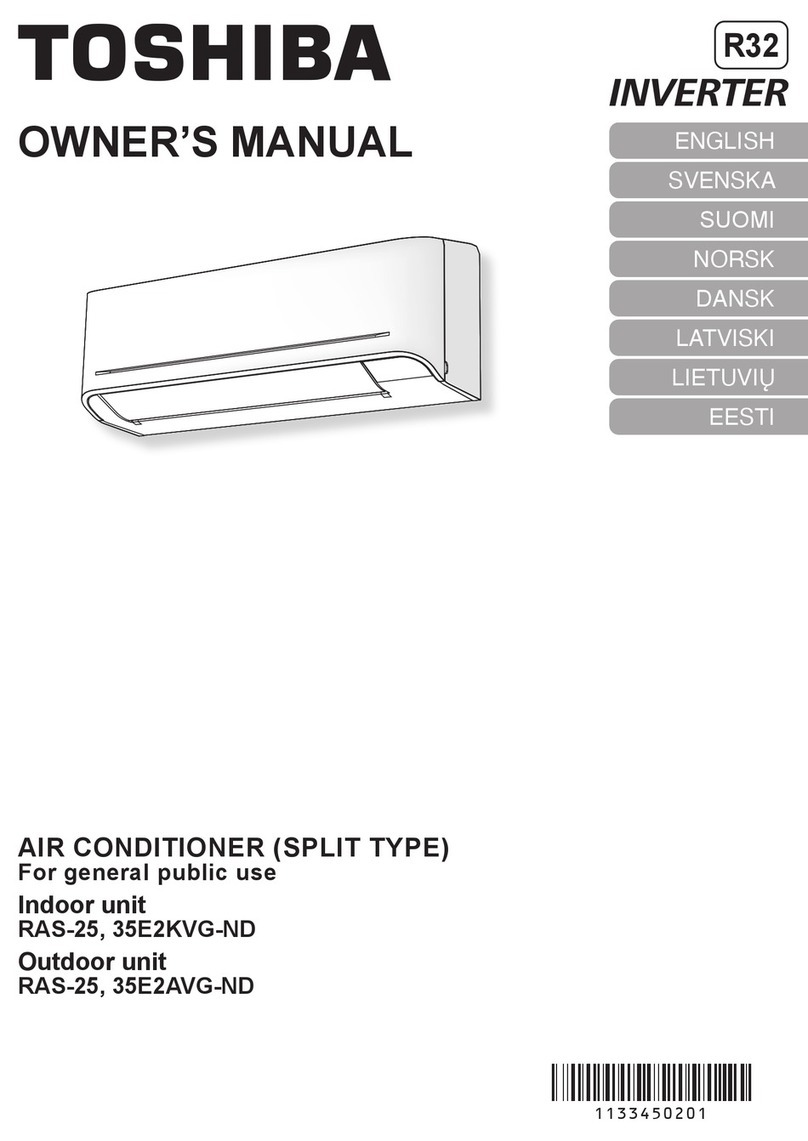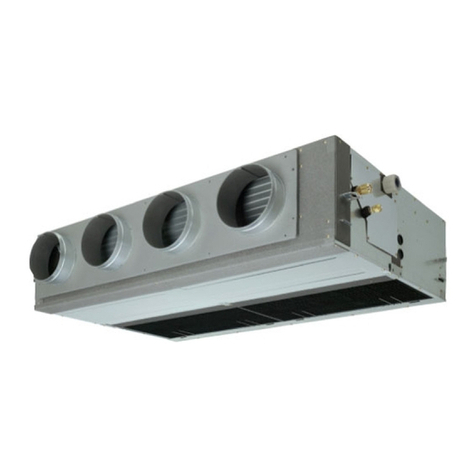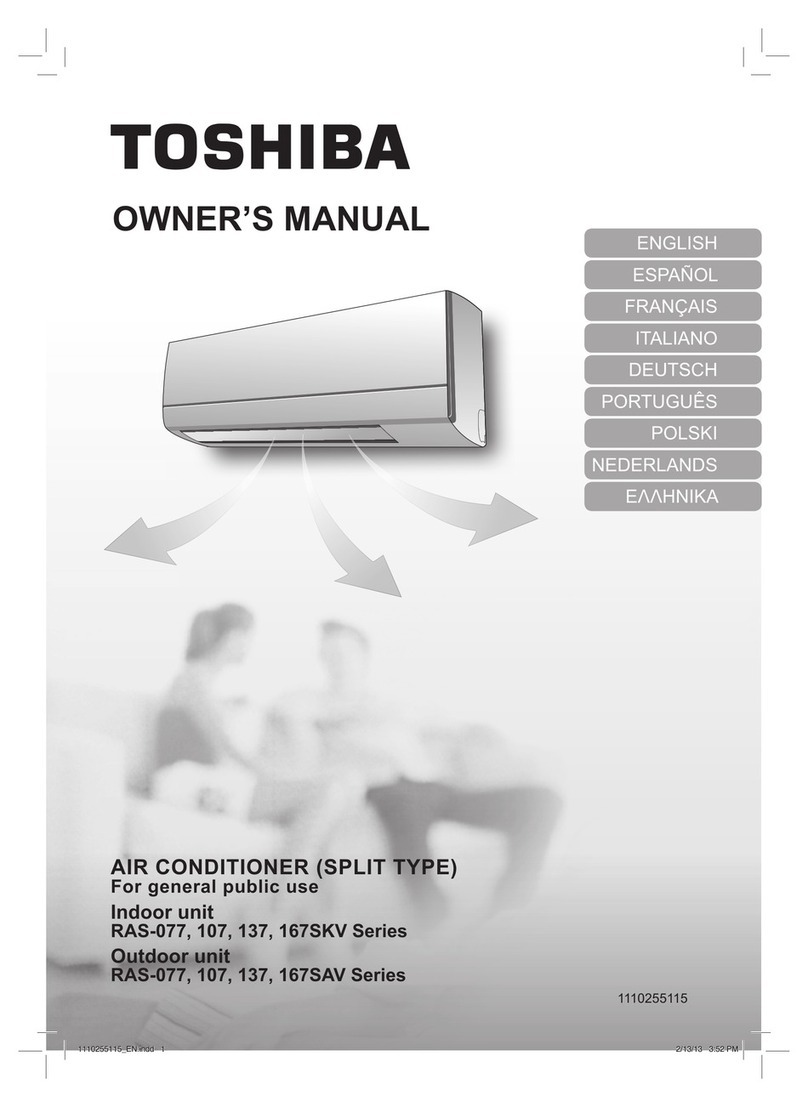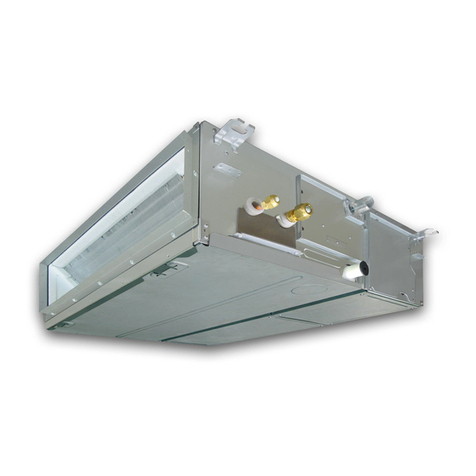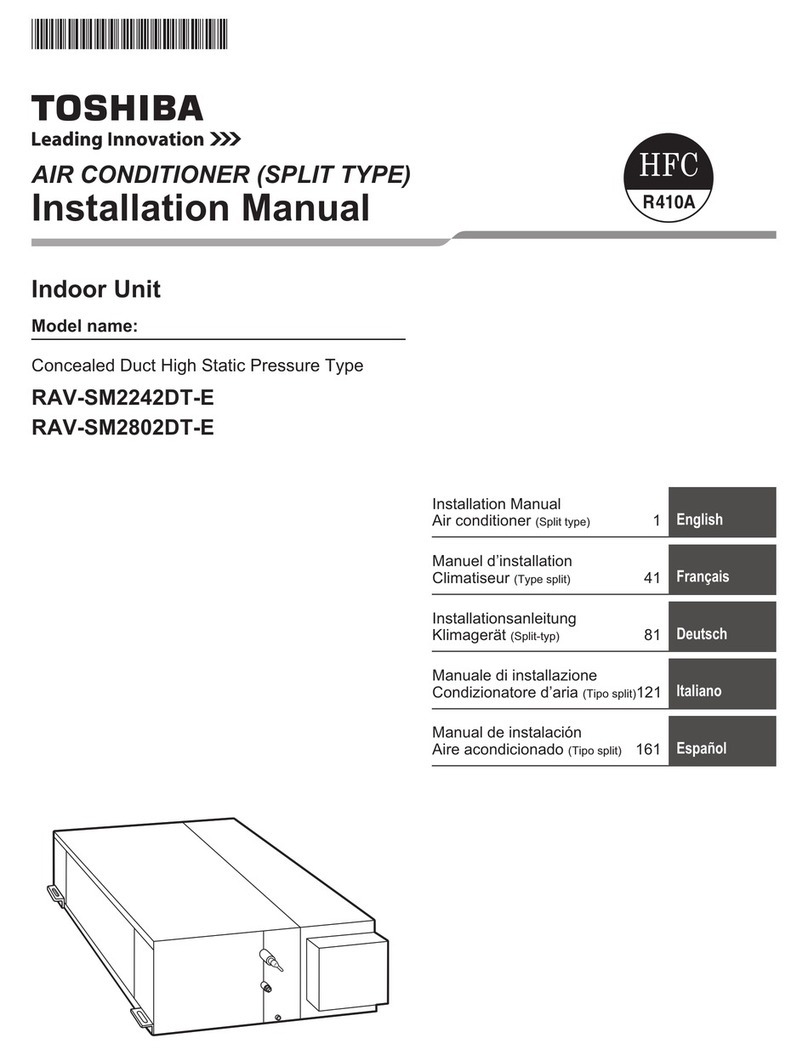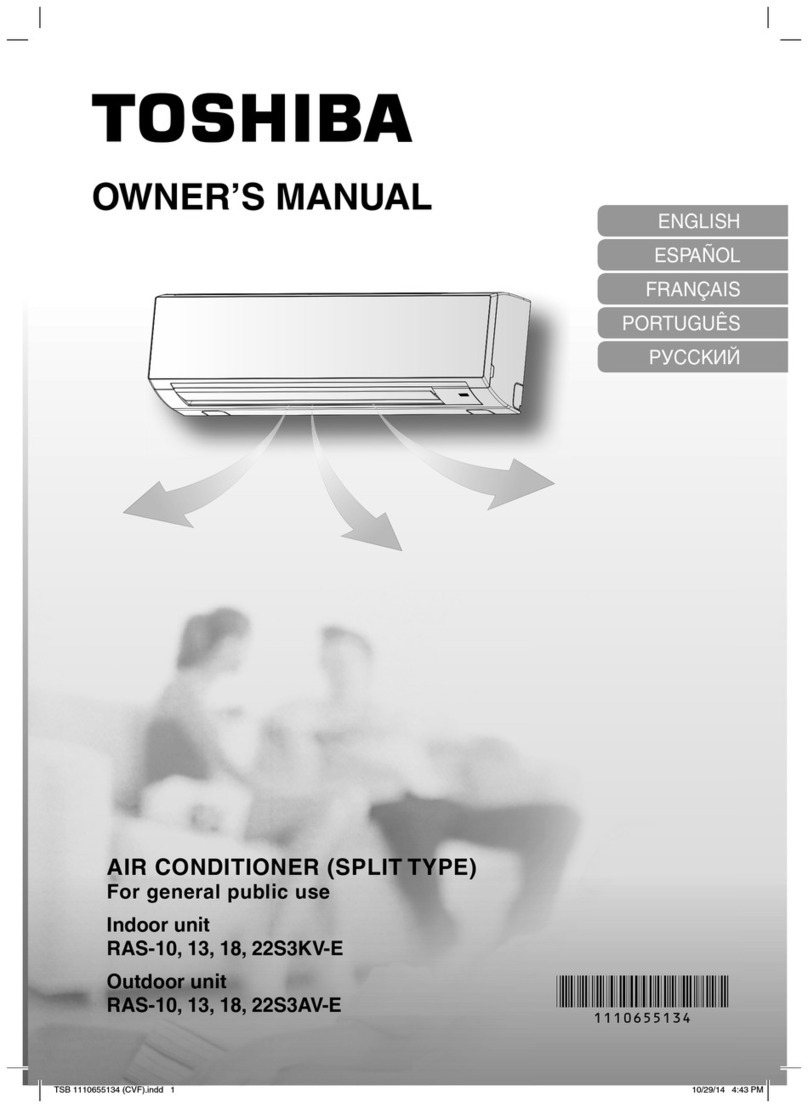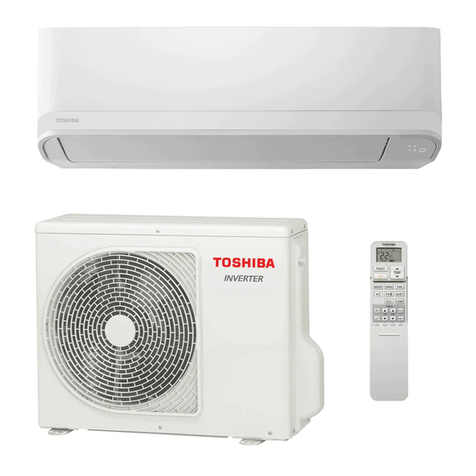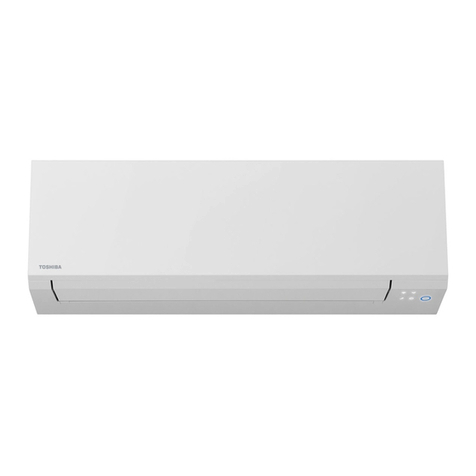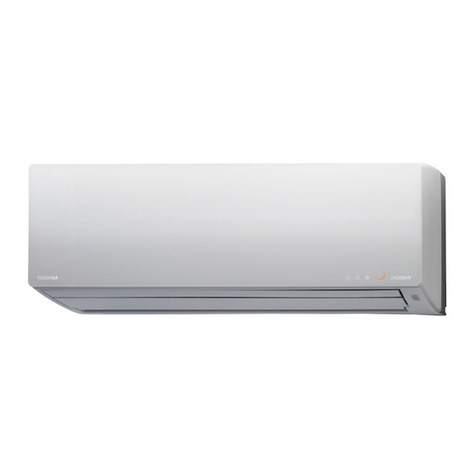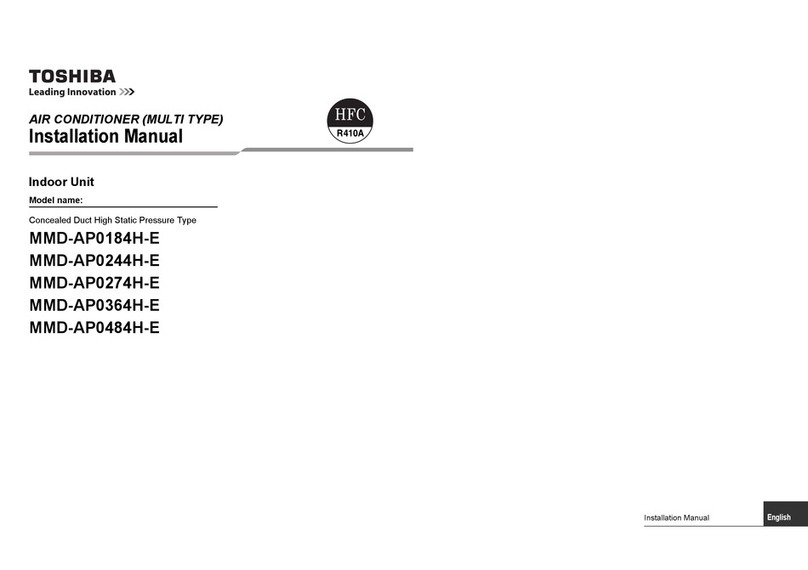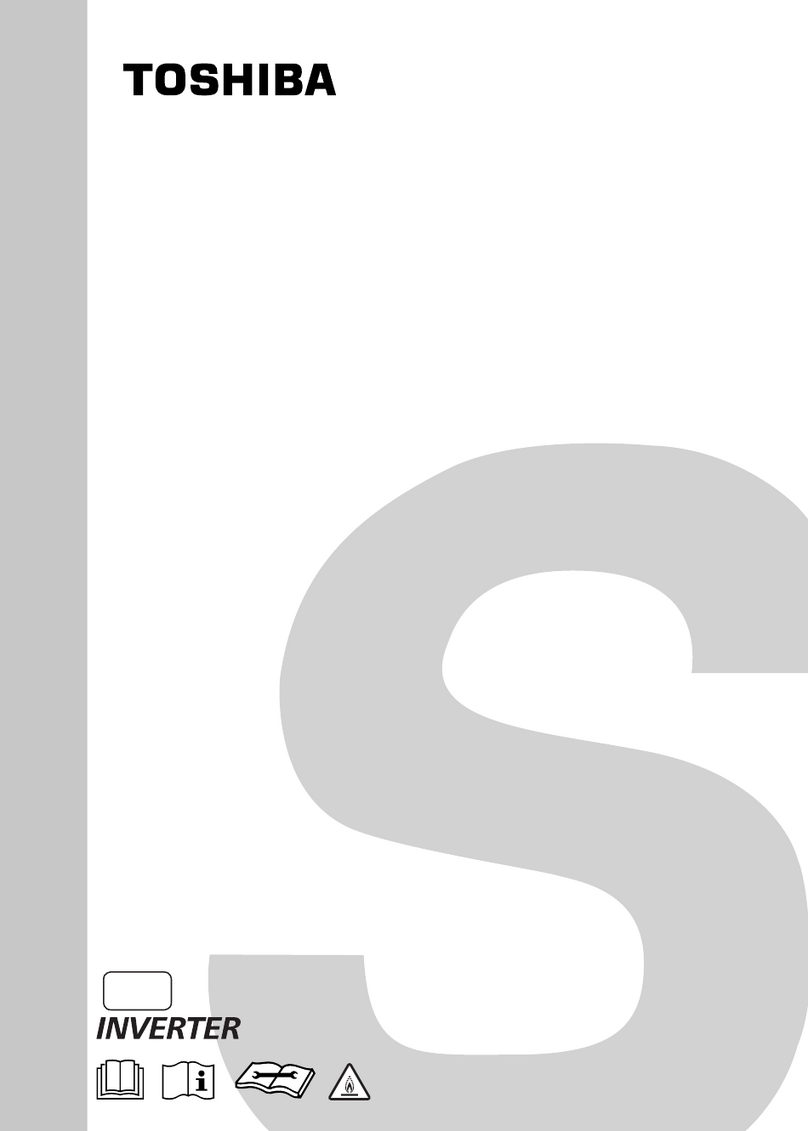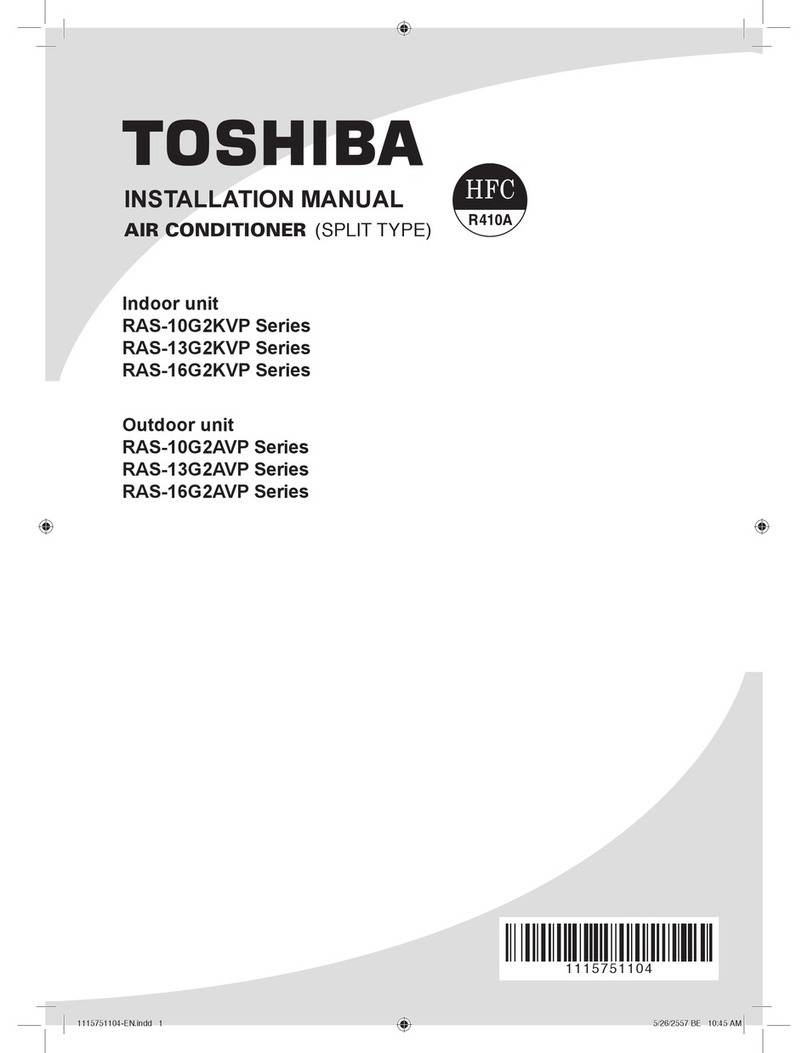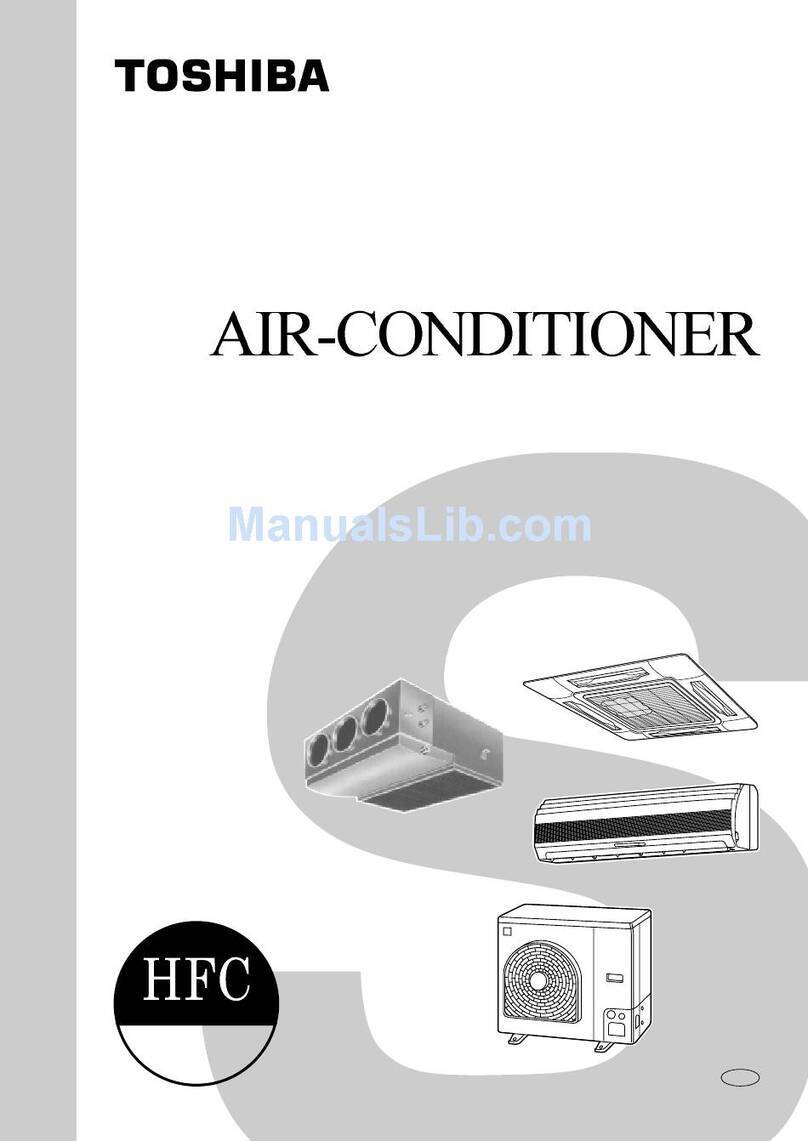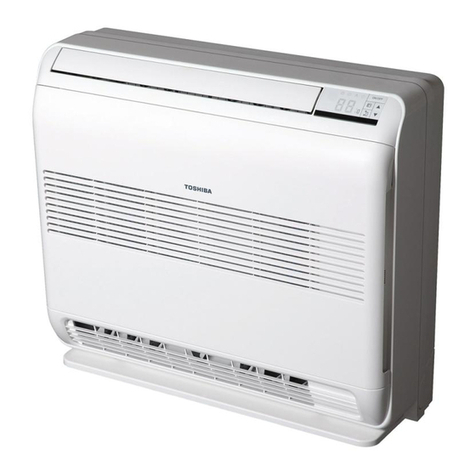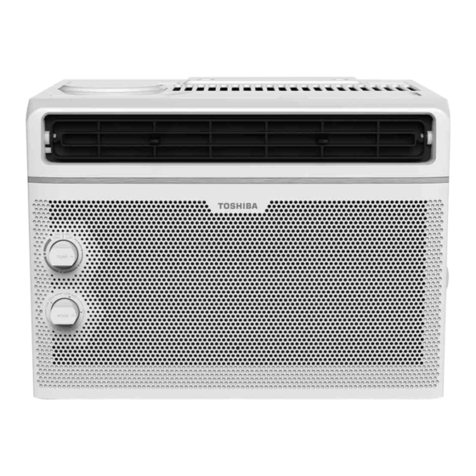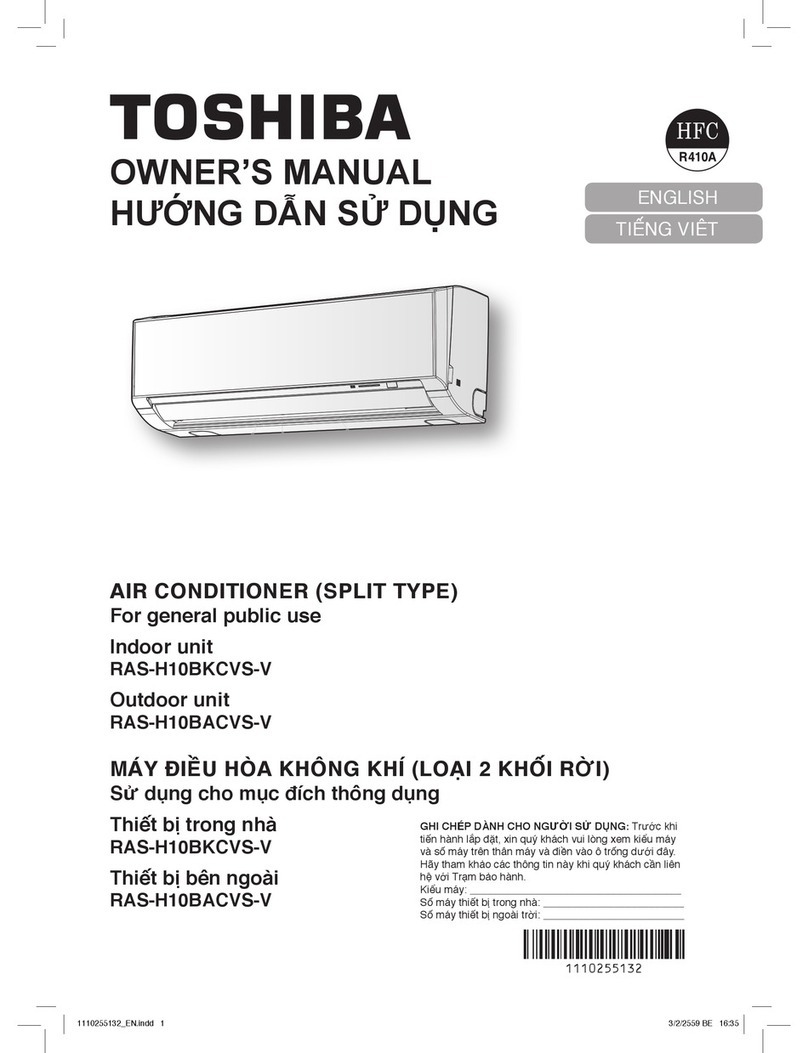
–3–
Installation
• When the indoor unit is to be suspended, the designated hanging bolts (M10 or W3/8) and nuts (M10 or W3/8) must
be used.
• Install the air conditioner securely in a location where the base can sustain the weight adequately. If the strength is
not enough, the unit may fall down resulting in injury.
• Follow the instructions in the Installation Manual to install the air conditioner. Failure to follow these instructions may
cause the product to fall down or topple over or give rise to noise, vibration, water leakage or other trouble.
• Carry out the specified installation work to guard against the possibility of high winds and earthquake. If the air
conditioner is not installed appropriately, a unit may topple over or fall down, causing an accident.
• If refrigerant gas has leaked during the installation work, ventilate the room immediately. If the leaked refrigerant gas
comes in contact with fire, noxious gas may generate.
• Use forklift to carry in the air conditioner units and use winch or hoist at installation of them.
Refrigerant piping
• Install the refrigerant pipe securely during the installation work before operating the air conditioner. If the compressor
is operated with the valve open and without refrigerant pipe, the compressor sucks air and the refrigeration cycles is
over pressurized, which may cause a injury.
• Tighten the flare nut with a torque wrench in the specified manner. Excessive tighten of the flare nut may cause a
crack in the flare nut after a long period, which may result in refrigerant leakage.
• After the installation work, confirm that refrigerant gas does not leak. If refrigerant gas leaks into the room and flows
near a fire source, such as a cooking range, noxious gas may be generated.
• When the air conditioner has been installed or relocated, follow the instructions in the Installation Manual and purge
the air completely so that no gases other than the refrigerant will be mixed in the refrigerating cycle. Failure to purge
the air completely may cause the air conditioner to malfunction.
• Nitrogen gas must be used for the airtight test.
• The charge hose must be connected in such a way that it is not slack.
Electrical wiring
• Only a qualified installer or qualified service person is allowed to carry out the electrical work of the air conditioner.
Under no circumstances must this work be done by an unqualified individual since failure to carry out the work
properly may result in electric shocks and/or electrical leaks.
• To connect the electrical wires, repair the electrical parts or undertake other electrical jobs, wear gloves to provide
protection for electricians and from heat, insulating shoes and clothing to provide protection from electric shocks.
Failure to wear this protective gear may result in electric shocks.
• Use wiring that meets the specifications in the Installation Manual and the stipulations in the local regulations and
laws. Use of wiring which does not meet the specifications may give rise to electric shocks, electrical leakage,
smoking and/or a fire.
• Connect earth wire. (Grounding work)
Incomplete grounding causes an electric shock.
• Do not connect earth wires to gas pipes, water pipes, and lightning conductor or telephone earth wires.
• After completing the repair or relocation work, check that the earth wires are connected properly.
• Install a circuit breaker that meets the specifications in the installation manual and the stipulations in the local
regulations and laws.
• Install the circuit breaker where it can be easily accessed by the agent.
• When installing the circuit breaker outdoors, install one which is designed to be used outdoors.
• Under no circumstances the power wire must not be extended. Connection trouble in the places where the wire is
extended may give rise to smoking and/or a fire.
• Electrical wiring work shall be conducted according to law and regulation in the community and installation manual.
Failure to do so may result in electrocution or short circuit.
Test run
• Before operating the air conditioner after having completed the work, check that the electrical control box cover of the
indoor unit and service panel of the outdoor unit are closed, and set the circuit breaker to the ON position. You may
receive an electric shock if the power is turned on without first conducting these checks.
• If there is any kind of trouble (such as an error display has appeared, smell of burning, abnormal sounds, the air
conditioner fails to cool or heat or water is leaking) has occurred in the air conditioner, do not touch the air conditioner
yourself but set the circuit breaker to the OFF position, and contact a qualified service person. Take steps to ensure
that the power will not be turned on (by marking “out of service” near the circuit breaker, for instance) until qualified
service person arrives. Continuing to use the air conditioner in the trouble status may cause mechanical problems to
escalate or result in electric shocks or other trouble.
• After the work has finished, use an insulation tester set (500 V Megger) to check the resistance is 1 MΩor more
between the charge section and the non-charge metal section (Earth section). If the resistance value is low, a disaster
such as a leak or electric shock is caused at user’s side.
• Upon completion of the installation work, check for refrigerant leaks and check the insulation resistance and water
drainage. Then conduct a test run to check that the air conditioner is operating properly.
Explanations given to user
• Upon completion of the installation work, tell the user where the circuit breaker is located. If the user does not know
where the circuit breaker is, he or she will not be able to turn it off in the event that trouble has occurred in the air
conditioner.
• If the fan grille is damaged, do not approach the outdoor unit but set the circuit breaker to the OFF position, and
contact a qualified service person to have the repairs done. Do not set the circuit breaker to the ON position until the
repairs are completed.
Relocation
• Only a qualified installer or qualified service person is allowed to relocate the air conditioner. It is dangerous for the
air conditioner to be relocated by an unqualified individual since a fire, electric shocks, injury, water leakage, noise
and/or vibration may result.
• When carrying out the pump-down work shut down the compressor before disconnecting the refrigerant pipe.
Disconnecting the refrigerant pipe with the service valve left open and the compressor still operating will cause air or
other gas to be sucked in, raising the pressure inside the refrigeration cycle to an abnormally high level, and possibly
resulting in rupture, injury or other trouble.
New Refrigerant Air Conditioner Installation
•This air conditioner adopts the new HFC refrigerant (R410A) which does not destroy ozone layer.
• The characteristics of R410A refrigerant are; easy to absorb water, oxidizing membrane or oil, and its pressure is
approx. 1.6 times higher than that of refrigerant R22. Accompanied with the new refrigerant, refrigerating oil has also
been changed. Therefore, do not let water, dust, former refrigerant, or refrigerating oil enter the refrigerating cycle
during installation work.
• To prevent charging an incorrect refrigerant and refrigerating oil, the sizes of connecting sections of charging port of
the main unit and installation tools are changed from those for the conventional refrigerant.
• Accordingly the exclusive tools are required for the new refrigerant (R410A).
• For connecting pipes, use new and clean piping designed for R410A, and please care so that water or dust does not
enter.
To Disconnect the Appliance from Main Power Supply.
• This appliance must be connected to the main power supply by means of a switch with a contact separation of at
least 3 mm.
The installation fuse (all types can be used) must be used for the power supply line of this conditioner.
(*1) Refer to the “Definition of Qualified Installer or Qualified Service Person.”
5-EN 6-EN
+00EH99891001_01EN.book Page 3 Monday, May 14, 2012 11:31 AM
